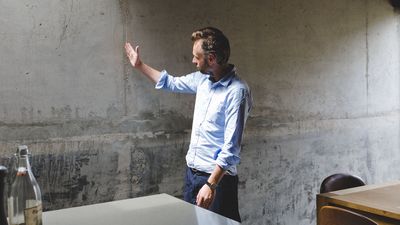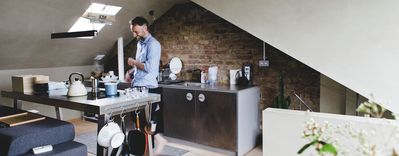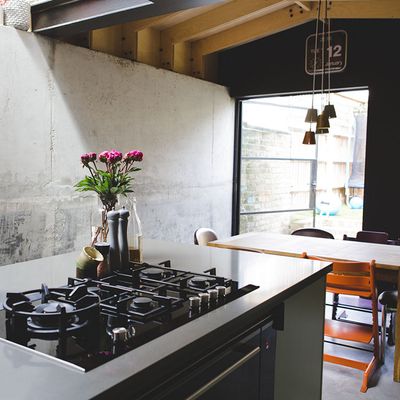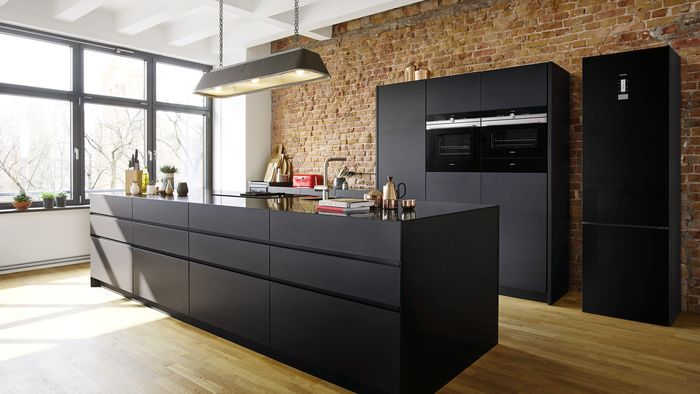Simon Astridge knew he wanted to be an architect from the age of 11, which perhaps explains the relaxed demeanor he now exudes, cultivated over many years of focused study and exploration. However, this quiet confidence also belies an intensely thoughtful and conceptual approach to his craft. Over the course of our visits to both his own home and the ‘Plywood House’ project that brought him so much initial attention, Astridge switches with ease between subjects big and small. He is as passionate when offering hyperspecific descriptions of bespoke door handles and unusual clay walling as he is about more overarching, abstract themes that are continually evolving and informing his work.
Despite your early infatuation, you say you didn’t truly fall in love with architecture until your fourth year of university. What happened?
It was just someone who introduced me to different books and ways of life and traveling. I did my thesis on comparing dwelling between Marrakesh and Dubai which are two very different cities, two very different histories but they also have similarities – parts of their culture, religion, food and climate. Yet the typology of a house is so different. In Marrakesh you’ve got a quiet courtyard, surrounded by water and plants and it’s all very serene; you’re away from the madness. But Dubai is all about sheer glass, embracing technology, etc. So stuff like that was opened up to me in terms of how I define architecture. Do I want to design skyscrapers like that? Or do I want to create homes for people with door handles that mean something to them?
You mentioned religion, food and culture – things that exist outside of architecture. How do you go about drawing on different concepts and mediums in your practice?
That’s something I’m asked often. What kind of architect are you? What kind of architecture do you do? It’s very easy to say that we do contemporary architecture but that’s not the reality of it. The best way I can describe it is that we talk to our clients about verbs instead of nouns. Nouns are quite flat parts of speech that you associate with spaces like bedroom, kitchen, bathroom; but we try to focus on the actual actions that happen in these spaces, what people do. For example, we try to focus on bathing as an act and not just on the fact that there is a bathtub. It’s about the whole process of undressing, the light, whether you feel relaxed, or whether you can play music. It’s about the process of going over certain thresholds and eventually engaging in an activity. We are interested in dreaming and sleeping, gathering around tables and cooking. We think about verbs like that; the way we design revolves around actions. That’s what architecture is, in my opinion – it’s about affordances.

Could you perhaps give an example of how this approach comes to life in your own home?
So we talked about bathing, and we actually wrote the word on the side of the door to that area. You approach from the carpeted area, which kind of massages your feet, into the timber area where you have a sink, you can wash and unrobe. And then there is another threshold which is the natural stone – a bathing zone itself. But we made that space double height, because of the way water evaporates and the ability to hang plants up there.
How do clients react to this approach? Are they comfortable with it?
At first they don’t agree with it. 95% of my job can be convincing people of the 5% concept. For example, one job we just finished was a wine cellar project. If you’re in a wine cellar you do not want a huge amount of lighting. The concept is a French wine cave with only candle light and so on. We minimally designed the lighting in there but the client was so nervous that he made us put in lots of wires in the ceiling just in case he had to add more lights. Luckily he hasn’t yet. But I mean that’s why they come to architects and we go to lighting specialists and speak to other people in their fields, it’s about advice.
Of course, with your own home you were free to experiment and indulge yourself without considering clients.
Yes, for example, for the walls we used this material which is 100% clay. It’s almost like an English version of Japanese Arakabe clay; you render it on the wall and you just allow it to dry. We used a lovely palette of materials that are quite pastel-y in their hues – for me this clay is quite a calming material.
Trends exist in architecture (and elsewhere). In recent years there’s obviously been a move to open spaces – less walls, kitchens and living rooms that merge into one space. Is that something that resonates with you?
We just try and make people’s lives better. Simple as that. If a family comes to me and expresses their functional needs for the space then that makes sense to us and I’ll pitch to them, no problem. If you want to make a big, open space with a sheer glass wall in just because you think it looks cool though, then we won’t do that.

Open space can be about height as well as surface area of course, going back to the double-height bathing area in your own home.
We talk a lot with our clients about cutting holes in spaces to allow them just to look up. Especially in central London, the pound per sq. ft value is going through the roof in lots of areas, which means the more area you’ve got the more you can sell it for. So if you start knocking voids inside properties in one sense you’re going against this. But then what value do you put on a triple height space? Technically, we’ve decreased the value of our property with the bathing area, but I think the architectural merit of it hugely outweighs that.
It sounds like you don’t march in with a ‘this is what I want to do with the space’ approach – it’s almost the opposite to that. The opposite to what Louis Khan once said of Frank Lloyd Wright, about how Lloyd Wright knew what the shape was going to be before he even knew what it was going to be used for.
Pretty much yes, you’re right. I’m the opposite of that. I think architecture needs function first and then beauty. Some architects are obsessed with having a beautiful shape first, or form. Some call it peacock architecture: ‘hey, look at me’. I mean, everyone can name the architects who do that, and I visit their spaces and I feel like I’m just getting shouted at so much. We design spaces for people and their actions and the things they want do in that space.

At the same time, as you allude to, there obviously is a formal consideration. When it comes to the aesthetic considerations, are you conscious of timelessness or future-proofing, or are you very much about doing what feels right at that time?
Wow, imagine! That would be a hell of a responsibility if you sat down and you were trying to design artwork that has got to be timeless. I think it just has to feel right. If it answers the brief and someone can have the most amazing bathing experience or an amazing sleep then I’m happy. That’s our job. Architects talk a lot about silence, but not necessarily the absence of sound. It’s the silence you get in an amazing space. Sometimes I walk into spaces that are designed thousands of years ago and just get like a moment, a sort of silence happens. That’s the dream, but you don’t know if you’re doing that or not, I don’t think you could ever aim for that.
A lot of what you’re talking about is experience, right? Verbs relate to the experience of doing things. Do you think people are beginning to place more emphasis on experiences in the way they understand the concept of ‘luxury’ in living and elsewhere?
That’s a really good question. I read a lot – not as much as I’d like – but whenever I go away I always do. I read Heidegger, all the ‘experiential being’ texts, and in architecture they talk about phenomenology. There’s lots of Finnish architects and philosophers that I admire and they talk about that. I think slowly society is moving towards that direction. The white box, the clean white box in the perfect world, I don’t think it’s relevant anymore. Look at London at the moment: craft breweries, craft gins, vinyl records are all back in. It’s about bringing experience back into our thinking.
How important is it in general for architects (or even non-architects) to engage on that slightly more abstract level?
I think we live in a world that’s being bombarded by images. Like, you’ll leave this apartment and go to the next space and there’ll be adverts everywhere; on your phone you have social media, emails and text messages, and adverts on buses and shops. We live in the information age, right? 15-20 years ago it wasn’t like this and I think what’s important is to cut out that white noise sometimes and just focus on the truth. What is the reality? What is the authentic idea? There’s a Finnish architect called Juhani Pallasmaa who talks about how architects need to look at the radical ordinariness. We need to be radically ordinary and I think that’s what we are trying to do as architects.

As our conversation comes to an end…
Simon’s way of working is clear: ordinary to some extent, but also completely radical. Many thanks, Simon. Find out more about Simon Astridge.
Find out more








